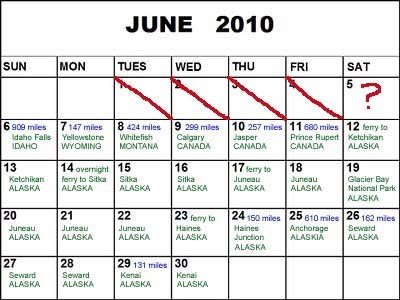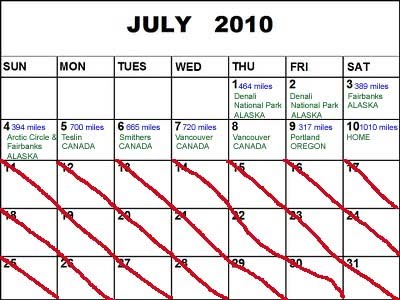 Surprise…we got rain today! Thankfully, our boat tour to Tracy Arm Fjord to view glaciers took us far enough away that it was cloudy yet dry. We were told that glaciers and icebergs are the most beautiful blue when there’s cloud cover, although we can’t say we were glad that it wasn’t sunny! For those of you who haven’t heard of a fjord, it’s a narrow glacier-carved valley filled with sea water. Tracy Arm Fjord is 50 miles south of Juneau and known as one of the most dramatic fjords in Alaska because of its steep walls and narrow channel, which at points is only 1/2 mile wide with 5,000-7,000 ft. mountains rising on either side. It also has two beautiful glaciers which were quite a bit different from those we saw in Glacier Bay National Park. This was an all-day tour and it took us 2 1/2 hours to reach the fjord. Along the way we were visited by many harbor seals and pups…right now is the calving season so there were lots of babies around. During this season, to escape the killer whales the seals have to move close to the ice-clogged waters adjacent to the glaciers. We were told that both of the glaciers on the tour were very active, calving (dropping ice into the water) often, so the narrow channel was wall-to-wall icebergs. However, since we were on a small boat with an experienced and daring captain, we were able to slowly negotiate the ice to get up very close to the glaciers. At each of the glaciers the captain cut the engine and we would watch and wait for the calving. We were hoping to be lucky enough to see “the big one.” In California, that means a big earthquake, but here in Alaska that refers to a huge calving of a glacier. After much patience and false starts, we were rewarded with a spectacular show at both glaciers. The calving produced a cracking bang, reminiscent of a gun shot, but by the time we heard the bang it was usually too late to see the ice falling due to the relative slowness of sound waves. When some of the larger chunks of ice splashed into the water, sizable waves were sent in our direction. On the way home our captain spotted a large black bear on the shoreline and took us in for a very close look. We had to stay completely silent so as not to disturb him. The bear was foraging for mussels, barnacles, and kelp, which seems to be their diet before the berries and salmon come in. The captain cut the engine and let us observe the bear for 15 minutes and we were so close that at several points he seemed to catch a whiff of our scent and shot us a curious (or hungry?) glance.
Surprise…we got rain today! Thankfully, our boat tour to Tracy Arm Fjord to view glaciers took us far enough away that it was cloudy yet dry. We were told that glaciers and icebergs are the most beautiful blue when there’s cloud cover, although we can’t say we were glad that it wasn’t sunny! For those of you who haven’t heard of a fjord, it’s a narrow glacier-carved valley filled with sea water. Tracy Arm Fjord is 50 miles south of Juneau and known as one of the most dramatic fjords in Alaska because of its steep walls and narrow channel, which at points is only 1/2 mile wide with 5,000-7,000 ft. mountains rising on either side. It also has two beautiful glaciers which were quite a bit different from those we saw in Glacier Bay National Park. This was an all-day tour and it took us 2 1/2 hours to reach the fjord. Along the way we were visited by many harbor seals and pups…right now is the calving season so there were lots of babies around. During this season, to escape the killer whales the seals have to move close to the ice-clogged waters adjacent to the glaciers. We were told that both of the glaciers on the tour were very active, calving (dropping ice into the water) often, so the narrow channel was wall-to-wall icebergs. However, since we were on a small boat with an experienced and daring captain, we were able to slowly negotiate the ice to get up very close to the glaciers. At each of the glaciers the captain cut the engine and we would watch and wait for the calving. We were hoping to be lucky enough to see “the big one.” In California, that means a big earthquake, but here in Alaska that refers to a huge calving of a glacier. After much patience and false starts, we were rewarded with a spectacular show at both glaciers. The calving produced a cracking bang, reminiscent of a gun shot, but by the time we heard the bang it was usually too late to see the ice falling due to the relative slowness of sound waves. When some of the larger chunks of ice splashed into the water, sizable waves were sent in our direction. On the way home our captain spotted a large black bear on the shoreline and took us in for a very close look. We had to stay completely silent so as not to disturb him. The bear was foraging for mussels, barnacles, and kelp, which seems to be their diet before the berries and salmon come in. The captain cut the engine and let us observe the bear for 15 minutes and we were so close that at several points he seemed to catch a whiff of our scent and shot us a curious (or hungry?) glance.




0 comments:
Post a Comment